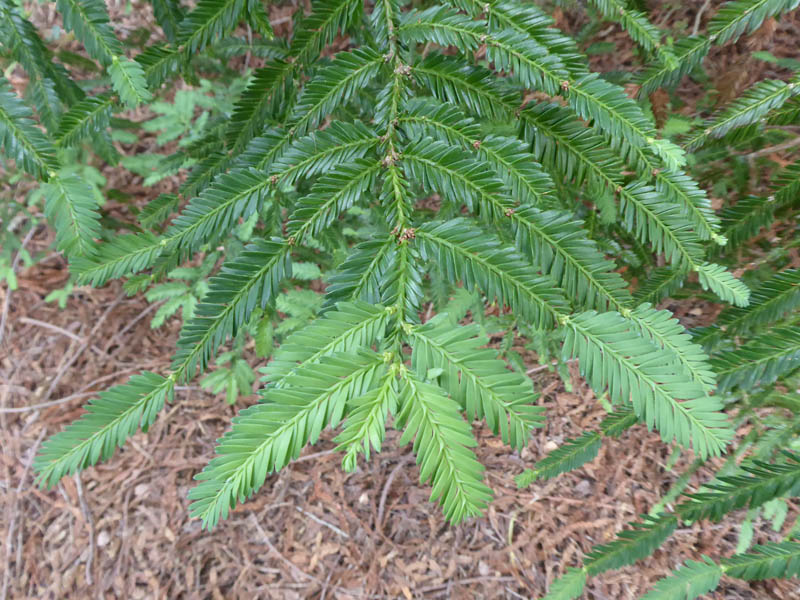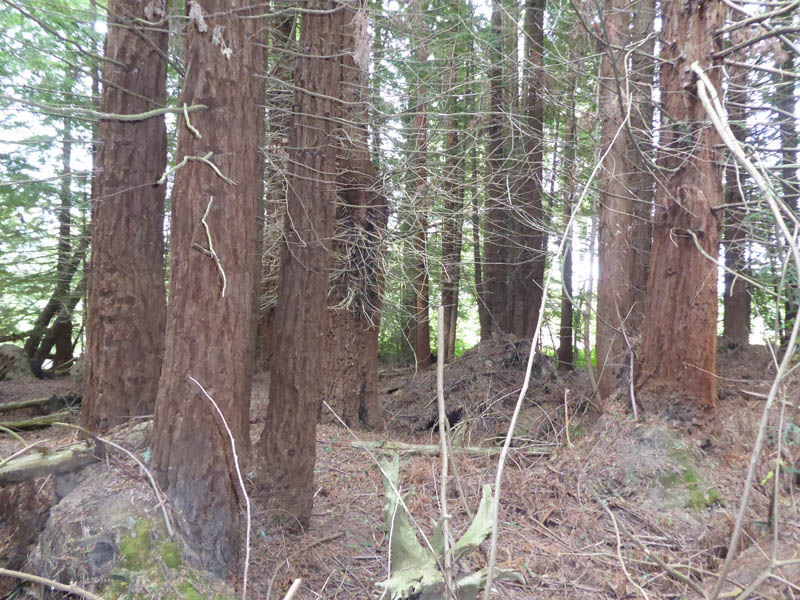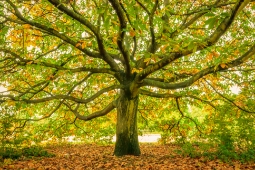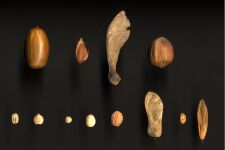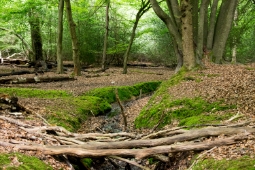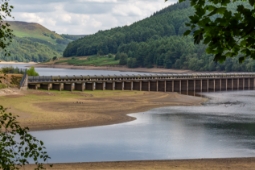Coast redwood (RSQ)
Coast redwood is the world’s tallest tree and can regularly top 110 m in suitable conditions. It is growing in popularity particularly as a species for under planting. Fine stands can be found across Britain with one example at Leighton in Powys said to have achieved the highest standing volume of any plantation in Britain. This is a species that could be grown more widely in Britain with climate warming, not least because it grows quickly and produces a high-quality timber. Coast redwood is listed as Endangered by the IUCN.
Coast redwood is categorised as a secondary tree species. These are species that have demonstrated positive silvicultural characteristics in trial plots but gaps in knowledge constrain wider use. The species are being actively evaluated to increase understanding and inform future deployment.
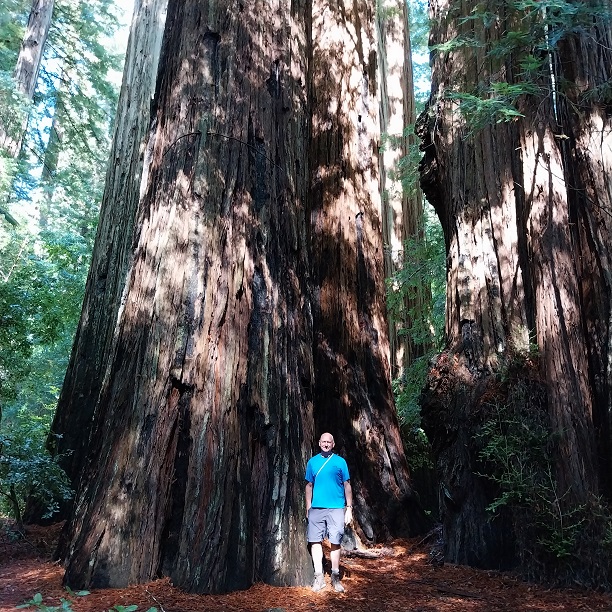
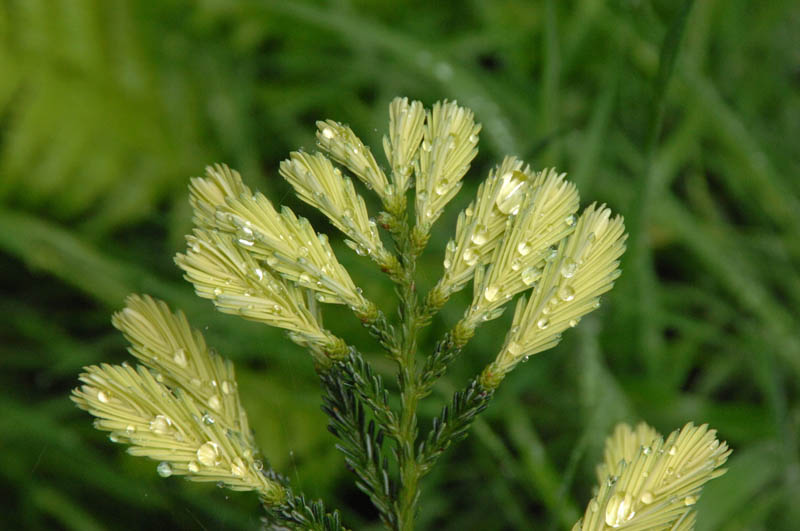
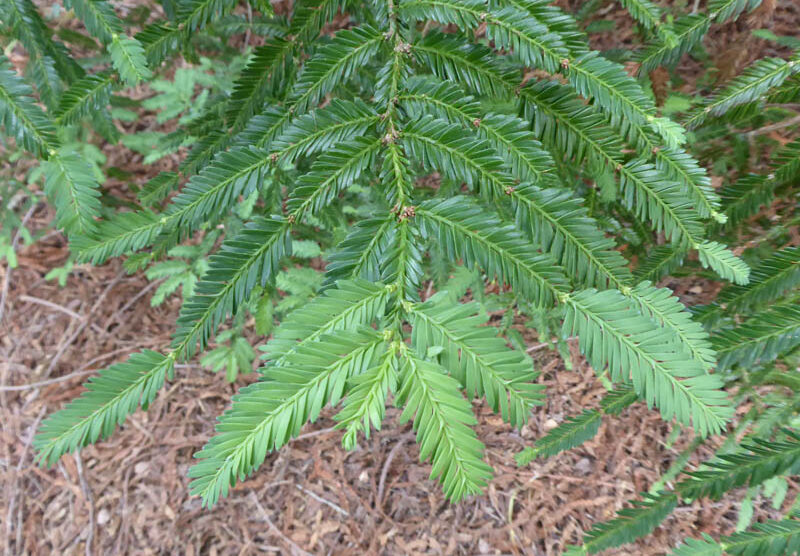
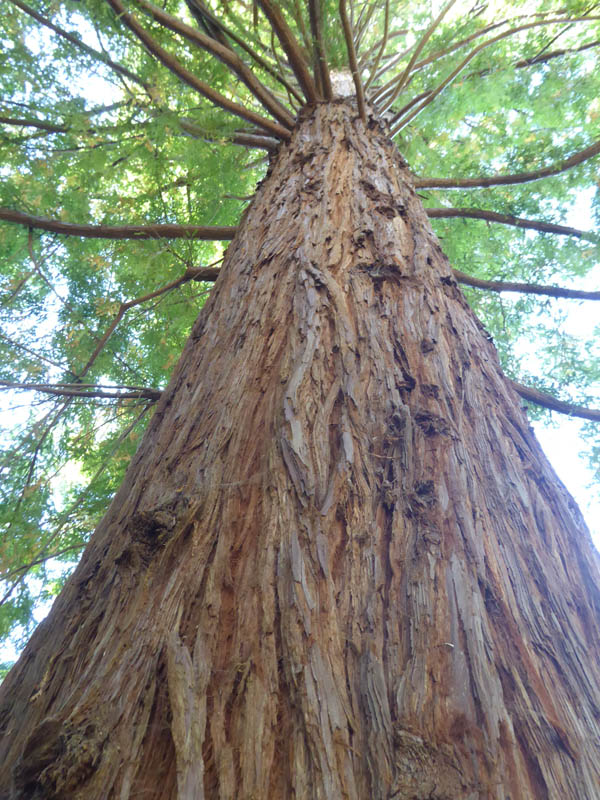
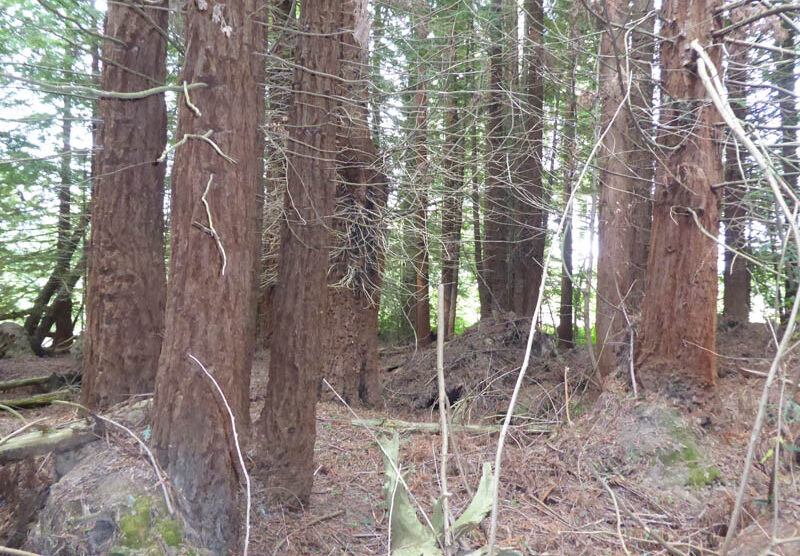
Range
Native to the coastal zones of central and northern California and far south of Oregon. Limited to the coastal ‘fog belt’ and found no more than 75 km inland.
Provenance Choice
Very limited provenance testing has been carried out in Britain, but northerly provenances are likely to be more cold hardy. Seed should be sourced from good quality British stands or its native range.
Site Requirements
Naturally occurs in a mild climate with frequent summer fogs; currently probably best suited to Wales and south-west England in areas with more than 1250 mm rainfall although it will grow in eastern Britain on suitable soils. May not be fully cold hardy in Britain, is sensitive to late frosts, does not withstand exposure and is not drought tolerant. Best growth is on poor to medium soils of fresh or moist soil moisture status. Is not suited to heavier gleys, peats or very poor dry soils. Regenerates from seed or from sprouts from cut stumps.
Further detail on the site requirements of coast redwood in current and future climates can be examined using the Forest Research Ecological Site Classification Decision Support System (ESC).
ECOLOGICAL SITE CLASSIFICATION TOOL
Silviculture
Coast redwood is a shade tolerant species best suited to establishing on existing forest land as underplanting or enrichment interplanting in conifer stands of an open structure (e.g., pine, larch, spruce, or Douglas-fir). Establishment can be successful on small open sites in sheltered conditions, but exposed sites must be avoided. A shade tolerant species with rapid early growth it can attain high-volume production on suitable sites.
Planting as part of a mixture with other shade tolerant fast-growing species is thought to be the best option. Suitable partners could be Douglas-fir, western red-cedar, and grand fir (natural partners in its native range) or other species such as Japanese red-cedar.
The species can regenerate from seed if site conditions are suitable. Coast redwood is one of the few conifers with the ability to vegetatively reproduce so can be managed as coppice. The production of quality logs will require pruning as the species tends to hold onto old branches in plantation.
Pests and Pathogens
No insect pests or diseases of major concern are noted for the coast redwood. In its native range it is commonly reported to have fewer foliar pathogens than any other major tree species. A curiosity rather than of major significance, Phytophthora ramorum has been reported to infect foliage of coast redwood. Coast redwood is palatable and susceptible to browsing.
See our other tools and resources
Further Resources
External
In addition to the general sources of information for species the following are useful for coast redwood.
Morgan, A. (2008) The growth and use of redwoods. Quarterly Journal of Forestry 102(2): 121-131.
USDA 2019, Sequoia sempervirens (D. Don) Endlicher, United States Department of Agriculture; Natural Resources Conservation Service, viewed 11 January 2022, https://plants.usda.gov/home/plantProfile?symbol=SESE3
Wilson, Scott McG. (2011) Using alternative conifers for productive forestry in Scotland. Forestry Commission Scotland, Edinburgh.
Wilson, Scott McG. (2010) Minor conifers in Britain – potential for silviculture and utilisation. Quarterly Journal of Forestry 104(1): 29-42
Wilson, Scott McG., Mason, B., Jinks, R., Gil-Moreno, D., and Savill, P. (2016) The Redwood and Red Cedar; Coast redwood (Sequoia sempervirens), giant redwood (Sequoiadendron giganteum) and western red-cedar (Thuja plicata) – species, silviculture, and utilisation potential. Quarterly Journal of Forestry 110(4): 244-256
